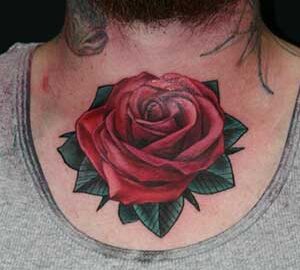Here is a small clip from the second DVD in the welcome tattoo - apprentice training series.
First I am going to talk a little bit about a multimeter. If you don’t have one of these, you need to get one. Multimeter can check voltage-ohms continuity. Those are the main thing that you’re going to use it for as a tattoo artist. Notice on the side here, you’re going to see this logo. That’s a line with some dashes. That means DC voltage.
Everything in the tattoo, power supply, tattoo machine, everything is running DC voltage. Over here with the little squiggle line, that’s AC voltage. We’re not going to use that. We might also use this part here. That’s continuity. I am trying to get a good focus on it. It’s hard. There we go, and lost it. I guess I am too close. This is continuity, right here. If we flip over here, now we’re in continuity mode. Some multimeters are going to beep. Some multimeters are just going to give you readout, right here, continuity. The one on the continuity means that there is no continuity on this multimeter. If we flip over to voltage, where the DC voltage is, we’re going to go ahead and leave it on 20 volts.
I am just going to show you with a 9-volt battery the example of how to use the multimeter. Pop this little guy out there. You can see it. On your multimeter, you have a red and a black wire. Read the instructions, figure out. Normally, the one that says COM is going to be your common ground. That’s going to be black. Black is usually negative. Black is usually ground. Red is going to be positive. On a battery, on an 9-volt battery, you’re going to have a positive and a negative. Usually, on an 9-volt battery, the small one is the positive, the big one is the negative. If we hook our red to the positive and our black to the negative, notice how we have 9.47 volts because we’re on DC voltage with the maximum range set to 20. If we were to flip that over to 200 on DC, it’s going to let us see up to 200 volts.
If we do the same thing again with the battery, hook the positive onto the red, the negative onto the black, we get the same thing, 9.5, 9.4. It was 9.47. We get 9.5 here. It just rounds. With the tattoo machine and the tattoo power supply, you’re normally not going to go higher than 10 volts, 12 volts. It’s safe to leave it on 20 volts while you’re checking your voltages coming out of the power supply. That’s how you use the multimeter.
All of this stuff is also covered in the book "Basic Fundamentals of Modern Tattoo" by CR Jordan


Recent Comments